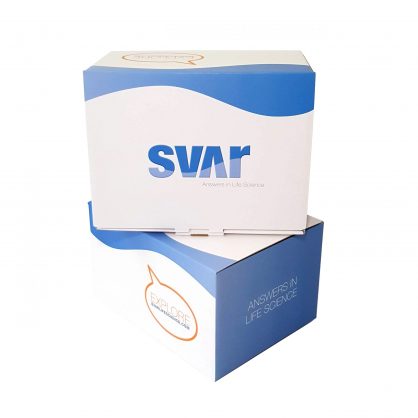Complement Classical Pathway ELISA
Complement Classical Pathway ELISA Developed and Manufactured by Svar Life Science
Size: 1×96 wells
Sensitivity: See Package Insert
Dynamic Range: Cut-off
Incubation Time: 2 hours
Sample Type: Serum
Sample Size: 10 µL
For Research Use Only
Controls Included
Specimen Collection
Blood samples are to be collected using aseptic venipuncture technique and serum obtained using standard procedures. A minimum of 5 mL of whole blood is recommended. Allow blood to clot in serum tubes, for 60-65 minutes at room temperature (20-25° C). Centrifuge blood samples and transfer cell-free serum to a clean tube. Sera must be properly handled to prevent in vitro complement activation. Sera should be frozen at -70° C or lower in tightly sealed tubes for extended storage or for transport on dry ice. Samples should not be frozen and thawed more than once. Do not use sera which are icteric, lipemic and hemolyzed. Heat-inactivated sera cannot be used. Plasma cannot be used.
Assay Background
The complement system plays an essential role in chronic, autoimmune and infectious disease. There are three pathways of complement activation, namely the classical, the alternative and the lectin pathway.
Impaired complement activity causes humans to become susceptible to repetitive fulminant or severe infections and may contribute to the development of autoimmune disease. Inappropriate activation of complement contributes to chronic inflammation and tissue injury.
Invitro activation of the complement sequence leads to the consumption of complement components which, in turn, leads to a decrease in their concentration. Thus, the determination of complement proteins or complement activity is used to indicate whether the complement system has been activated by an immunologic and/or pathogenic mechanism. Both functional and immunochemical complement measurements are used to evaluate subjects when a complement-activating disease is suspected or an inherited deficiency is possible. The level of complement activity evaluated by functional assays such as Eagle Biosciences Complement Classical Pathway ELISA Assay Kit takes into account the rate of synthesis, degradation, and consumption of the components and provides a measure of the integrity of the pathways as opposed to immunochemical methods which specifically measure the concentration of various complement components.
Related Products
Complement TCC ELISA Assay Kit
Complement C4d ELISA Kit
Total Complement Functional Screen ELISA


